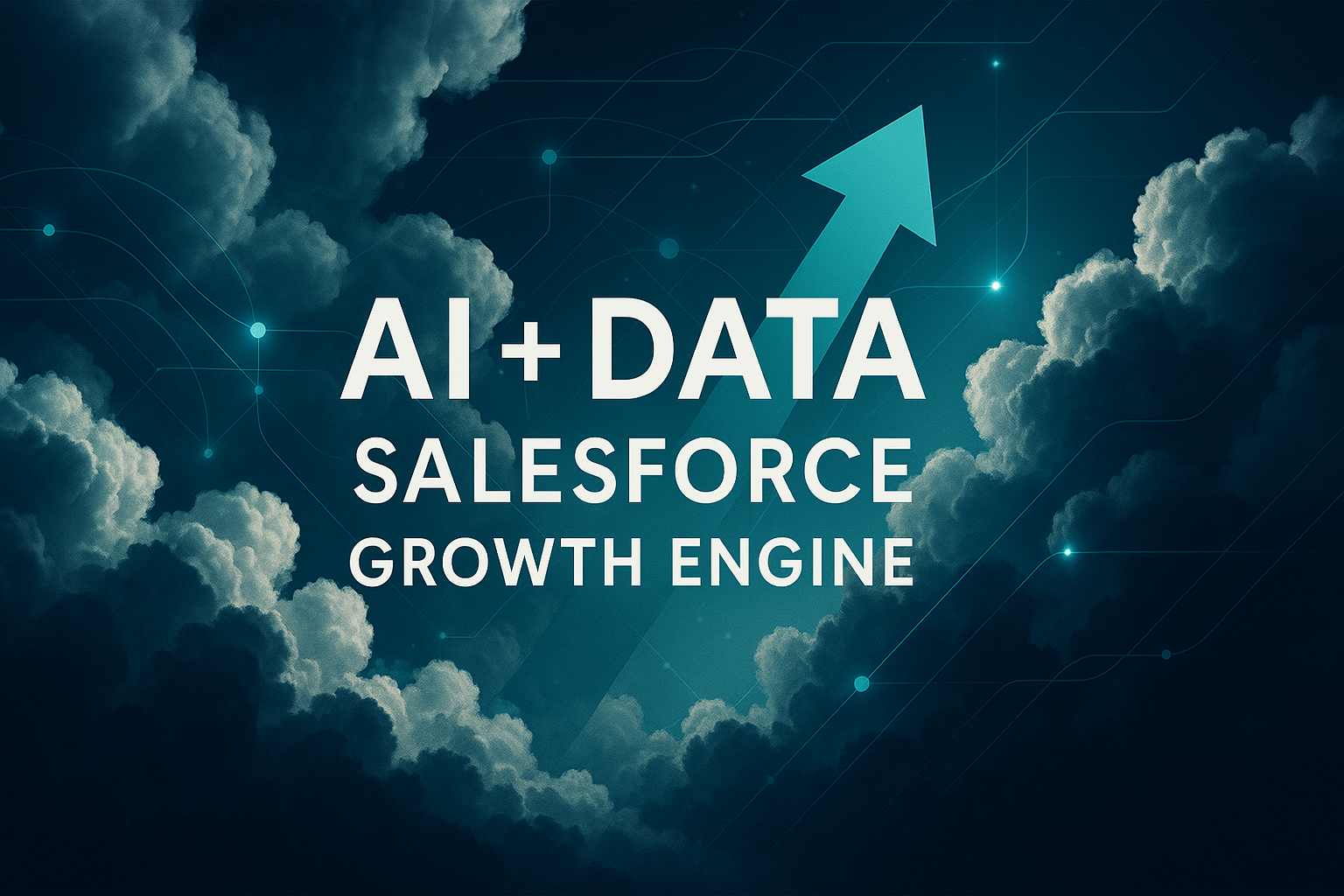Quick take:
Pushing data into Salesforce is easy; turning that data into action is where the ROI lives. With today’s low-code AI tooling and API connectors, mid-market teams can unlock insights that once took enterprise budgets.
1 Real-Time Bank Data for Instant Credit Decisions
Problem: Manual underwriting slows loan approvals and frustrates borrowers.
Move: Stream live transaction feeds from Flinks (or Plaid) into custom objects, then trigger an Apex scoring class.
Outcome: Underwriters review pre-scored applications with risk flags in minutes—our clients see up to 70 % faster decision cycles.
Starter tip: Use Platform Events so every new transaction fires a Flow that recalculates exposure without apex governor headaches.
2 AI-Driven Lead Scoring That Learns with Every Deal
Problem: Sales reps treat all MQLs the same, wasting dials on tire-kickers.
Move: Pipe historical opportunity data to OpenAI embeddings (or Einstein via MuleSoft). Return probability scores, surface the top 10 % in a “Hot Leads” list view.
Outcome: Reps spend time where it counts—some orgs report 30 % increase in win rate with the same headcount.
Starter tip: Store embeddings in a custom Big Object, refresh weekly via a scheduled Apex batch to stay within context limits.
3 One-Click Sentiment Analysis on Case Comments
Problem: Support managers fish through comment threads to gauge customer health.
Move: On every new CaseComment, send the text to an LLM sentiment endpoint and write back a 1-to-5 score.
Outcome: A simple dashboard highlights accounts trending negative before the QBR blows up.
Starter tip: Use an External Services-registered OpenAI endpoint so admins can invoke the analysis in declarative Flows—no code deploy required.
4 Data-Driven Cross-Sell in Experience Cloud
Problem: Customer portals present the same upsell banner to everyone—noise = banner blindness.
Move: Query purchase history + product usage via MuleSoft, drop into a Personalization Rules Lightning component that swaps offers based on LTV and recency.
Outcome: Clients see 2-3× higher click-through versus static promos.
Starter tip: Cache the MuleSoft payload in Platform Cache to keep guest-user page loads sub-second.
5 Ops Dashboards That Surface Exceptions, Not Rows
Problem: Executives drown in tabular reports with thousands of records.
Move: Build a Lightning Web Component that calls a Heroku function (Python/Pandas) to roll up anomalies—then writes only the outliers to a “KPI Exceptions” object.
Outcome: Daily stand-ups focus on why metrics moved, not scrolling through data.
Starter tip: Stream the summarized rows back to Salesforce via Bulk API v2 for 10× faster loads on large datasets.
Implementation Playbook (2-Week Sprint)
| Day | Milestone |
|---|---|
| 1-2 | Discovery & KPI mapping |
| 3-4 | API connection (Flinks / OpenAI / MuleSoft) |
| 5-7 | Prototype Flow & Apex handlers |
| 8-9 | Security review + governor testing |
| 10 | UAT with power users |
| 11-14 | Iteration & production deploy |
Ready to See These Gains in Your Org?
Cloud Nimbus LLC specializes in marrying clean architecture with smart AI callouts—no black-box magic, just measurable outcomes.
Book a 30-minute discovery call → cloudnimbusllc.com/contact
Written by Glen Bradford, Founder & Chief Problem-Solver at Cloud Nimbus LLC.


